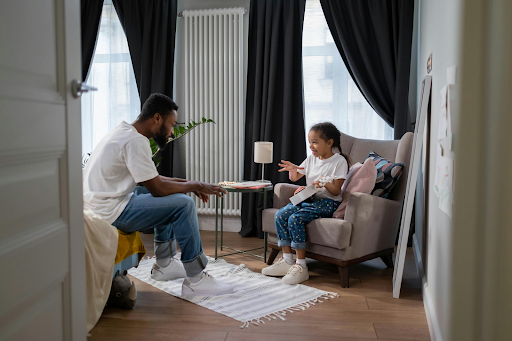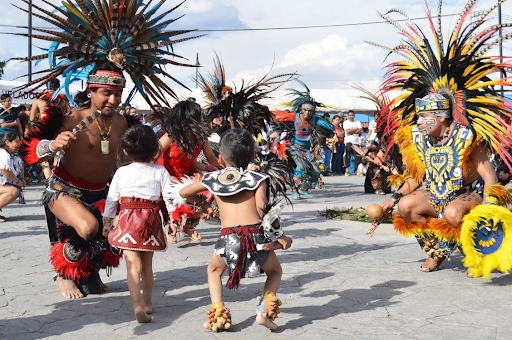
This is a scenario every parent grapples with as soon as their kids can phrase their curious questions. The world today is a big global village full of different cultures and traditions. Children are naturally curious and ask many questions in order to understand the differences and similarities of cultures.
These questions open wonderful opportunities to initiate discussions of race, culture, and traditions in an unbiased way. Early cultural awareness would make children turn into respectful, understanding humans, always eager to absorb ideas from diverse ethnicities but rejecting discriminative elements and prejudices.
Discussing cultural coexistence delicately can help raise a generation that is aware, inclusive, and empathetic. Isn’t that a massive win for any parent?
What is Culture?
In a social context, culture is defined as the customary beliefs, social forms, and material traits of a racial, religious, or social group. It’s what shapes our identity from childhood through traditions, language, and daily interactions. For kids, culture begins at home with meals, prayers, and celebrations. They notice and question cultural differences in their friends and surroundings. While some parents may delay cultural discussions, children are ready to learn and connect with new values early on. The early exposure of culture through activities and conversations by families will increase empathy and the appreciative aspects of diversity. The more we teach about issues relating to culture, the more our children become open-minded and empathetic.
Why Cultural Awareness is Essential for Kids
Fosters Empathy and Understanding
Exploring different cultural practices helps children put themselves in the shoes of others. This enables them to view the world in an entirely different way and develop a sense of compassion.
Encourages Open-Mindedness
Exposure to different cultures makes children more accepting. They become more tolerant and thus less likely to develop preconceived notions about other people. Additionally, this broadened perspective enhances their relationships with people.
Enhances Social Skills
Having an understanding of one’s culture contributes to the development of social skills among kids and thus enables them to talk to different people more appropriately and at ease. This is helpful in fostering strong and healthy relationships.
Promotes Cognitive Development
Exposing children to diverse cultures has been shown to foster cognitive growth. It encourages children to think beyond the usual, enhancing their capability of finding solutions to problems. This particular aspect of ‘cultural experience’ also adds to their overall learning.
How to Teach Culture to Your Kids
1. Storytelling and books
Storytelling and books are powerful tools for teaching about culture. Dive into diverse tales and characters from around the world to spark your child’s imagination and curiosity. Choose books that celebrate different traditions, languages, and lifestyles. Reading together not only improves literacy but also opens the door to conversations about cultural values and histories. Stories are a window into the lives of others, fostering empathy and understanding.
2. Traditional music and dance

Learning about culture can be made extremely exciting through music and dance as they are universal languages understood all over the world. Let your kids listen to folk music from different cultures and guide them on the instruments and rhythms used. Arrange for dance sessions that incorporate the local dances of different nations. This energetic activity promotes cultural awareness and allows children to appreciate the beauty of different cultural expressions while having a blast.
3. Celebrate a holiday/festival from another culture
Dive into the diverse world by celebrating holidays from various cultures with your kids. Attend events like Chinese New Year or explain festivals like Mardi Gras. Spark curiosity with movies like Coco for Day of the Dead. Engage with people celebrating different traditions. Schools often host cultural festivities, making them perfect for introducing kids to new customs. Dress them up, share treats, and discuss their experiences.
4. Explore the world with Orboot Earth
Orboot Earth by PlayShifu is an interactive globe that uses AR to immerse children in different cultures. This engaging toy teaches about culture through visual storytelling, quizzes, and voice interactions. Kids can explore unique traditions, cuisines, and festivals from around the world, making cultural learning fun and accessible. Ideal for both homeschooling and classrooms, Orboot Earth fosters cultural awareness, encouraging kids to become empathetic and open-minded global citizens.
5. Discover new role models
The world is full of role models. History is full of role models. Every culture has its role models who have carried it forward through the space of history into its modern avatars. Discover them together with your kids. Talk about people who’ve inspired historical changes like Nelson Mandela, Ruth Bader Ginsburg, or the Dalai Lama. Talk about the current generation of trailblazers like Greta Thunberg or Colin Kaepernick.
6. Visit different neighborhoods
Exploring diverse neighborhoods can be a treasure trove of cultural experiences for your kids. Visit parks, museums, and places of worship like churches, synagogues, mosques, or temples. Areas like Chinatown offer rich cultural immersion right in your city. Discuss traditions and customs beforehand to enhance understanding. Use your local community to provide meaningful, hands-on lessons in cultural awareness.
7. Read with your child
Reading is your child’s best friend in the world of learning. It’s a stress-buster and a chance for cuddling. Reading builds vocabulary and introduces your child to a world of imagination, creativity, culture, and knowledge. Inculcating reading values will open up a diaspora for them to explore, allowing them to travel through time and get fascinated by historical learnings and scientific facts, all by navigating books.
8. Traditional clothing
Exploring traditional clothing is an engaging way to teach kids about culture. Encourage your children to dress up in garments from various cultures, explaining the significance behind each piece. Organize a cultural fashion show at home, where they can proudly display their outfits and learn about the traditions and histories they represent. This hands-on experience fosters an appreciation for diversity and adds a colorful touch to cultural education.
Fun Cultural Activities For Kids
Cultural Cook-offs

Cultural cook-offs are an exciting way to teach about culture through cuisine! Cooking with kids teaches them measuring, chopping, and vocabulary while having fun. Plan a cooking session every few days to explore new cultures. Discuss how different cuisines reflect cultural stories and traditions. Experiment with recipes from various countries and let the whole family enjoy the delicious results. It’s a perfect activity to foster cultural awareness and appreciation.
Art and Craft Projects
Dive into the colorful world of traditional crafts! Create Japanese origami, Mexican papel picado, or Native American dream catchers with your kids. These projects are hands-on ways to explore different cultures while nurturing creativity. Discuss the cultural significance of each craft as you work on them together. Art and craft projects not only enhance cultural awareness but also make learning a fun and immersive experience. Let your creativity soar, and embrace the diversity of the world through art!
Virtual Cultural Exchanges
Embrace the digital age by connecting your kids with children from different cultures through virtual exchanges. Platforms like PenPal Schools or ePals offer opportunities for your children to communicate with peers globally. These interactions help them understand cultural nuances and form friendships beyond borders. Engaging in virtual exchanges fosters empathy, broadens their worldview, and cultivates an appreciation for diversity—all from the comfort of your home.
Visit Museum Exhibitions
People view museums as places of cultural education where history and traditions are brought to life. In order to facilitate your kids’ understanding of different cultures, visiting exhibitions focused on other cultures helps them experience and see other ways of living. When talking about artefacts, artworks, the history of certain events, and other aspects, it arouses their interest. Additionally, a great number of museums now have practical activities for children, thus making the process of studying culture more interesting and easier to remember.
Conclusion:
Incorporating cultural education into your child’s daily routine can change their worldview while developing a sense of empathy and curiosity. Begin by reading diverse books, taking part in international holidays, or cooking various recipes from other cultures. Discuss traditions and values while exploring your local community for cultural experiences. Use tools like interactive globes or virtual exchanges to broaden their horizons. These steps create a foundation for lifelong learning and appreciation of our diverse world. Keep the momentum going—your efforts today will shape the compassionate global citizens of tomorrow.
FAQs
1. How early should I start teaching my child about different cultures?
Start as early as possible—children are naturally curious and can understand cultural differences from a young age. Use age-appropriate materials and activities to introduce these concepts gradually.
2. How can I teach my child about cultures that I’m not familiar with?
If you’re unfamiliar with a culture, learn together with your child. Use books, documentaries, and online resources to explore and discuss new cultures.
3. How can I address difficult topics related to culture, like racism or inequality?
Address difficult topics by being honest yet age-appropriate. Use real-world examples and encourage open dialogue, emphasizing empathy and respect.
4. What if my child shows disinterest in learning about other cultures?
If your child shows disinterest, make learning fun through interactive activities like cooking, music, or crafts. Tailor activities to their interests to spark curiosity.

